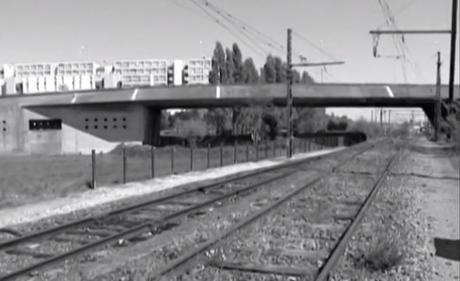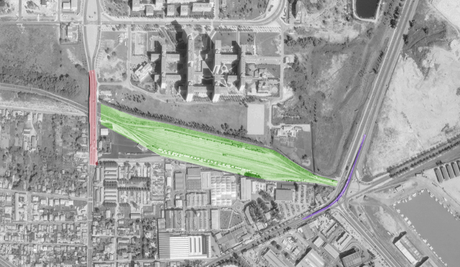
To the north of Bordeaux, close to where the Aubiers high-rise estate was built in the 1970s, three features on the landscape show how much the city has evolved and continues to evolve, as well as demonstrating how some temporary solutions prove to be far more durable than initially expected. This is the tale of a bridge, some wasteland, and a flyover, i.e. the three areas highlighted above as they appeared at the time when the aerial photo was taken: 1984.
The bridge
The bridge in question is Pont de Cracovie (Krakow). This bridge was completed in 1967 to cater for a sudden influx of traffic entering Bordeaux from the north, as a result of the brand new Pont d’Aquitaine making it possible to cross the Garonne from Lormont, carrying road traffic arriving from the A10 motorway onto the first sections of the Rocade ring-road.
While it made sense to open up a new way of accessing Bordeaux, there was an obstacle to overcome: a freight railway line which provided a means of connecting the docklands area of the city with Saint-Jean railway station to the south. A no-frills road bridge was therefore delivered to get from one side to the other: a big hand please for Pont de Cracovie.
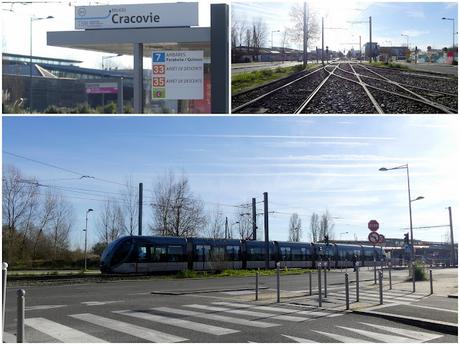
Cracovie tram stop can now be found where the bridge once stood.
The bridge was eventually demolished in 2006 to make way for the new tram network, which was installed at ground level, with the use of the freight railway line having ceased in the interim period. Aptly, the resulting tram stop has also been given the name ‘Cracovie’. The bridge coming down was a revelation to some. In a video which looks over the history of the Aubiers estate, one witness compared the bridge to “a frontier. As soon as it came down, as if by chance, we noticed Bruges was just next door, along with the Grand Parc estate… It’s strange, the bridge caused problems… it left its mark on us.”
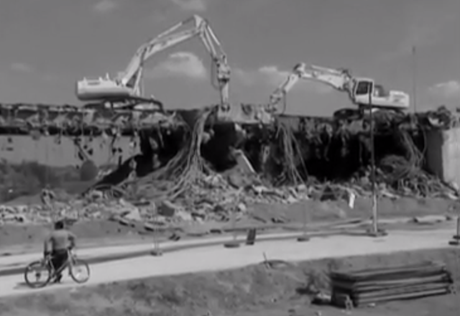
The bridge being demolished in 2006. Source of this picture and the one of the bridge further up the page: Bordeaux Ma Ville on Dailymotion.
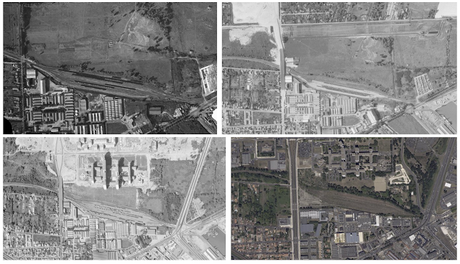
These aerial shots (to be found on the IGN Remonter Le Temps website) date from 1961, 1965, 1976 and 2012. Cracovie bridge can be seen in the 1965 picture, but was not yet in service. The Aubiers estate is visible in the 1970s shot. By the 2012 picture, the bridge had made way for the tram network. See also the video compilation of these and further photos at the end of the article!
The wasteland
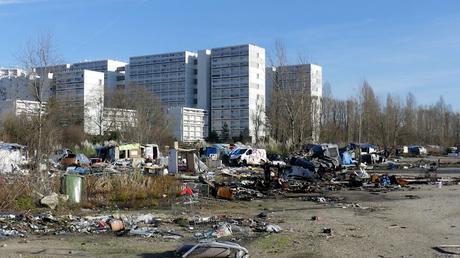
What was also keeping the Aubiers residents trapped were the extensive railway sidings that stretched alongside their buildings. The aerial photos above suggest that the rails were removed for good sometime around 2010, but nothing immediately took their place on this land which officially comprises two plots; one of which belongs to Bordeaux Métropole, the other being under the ownership of Bordeaux Port Authority.
In recent years, the land gradually became a migrant shantytown made up of makeshift accommodation hand-crafted by Romanian and Bulgarian Roms. By early 2021, it is though that up to 400 people were living on site, and over time tension mounted between the shantytown’s inhabitants and their Aubiers neighbours. Reports suggest that this was mainly due to music and noise at all hours, but also the smoke and odours caused by the plastic coating being burnt off wiring to recover copper.
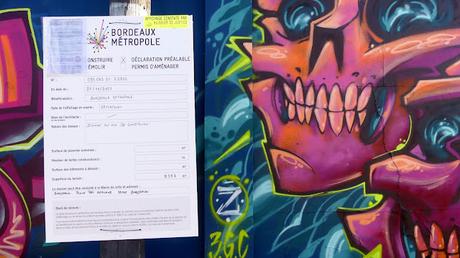
Late in 2021, the shantytown was cleared for good although, at the time of writing, the amount of debris that remains is incredible: cars and vans that have been gutted, caravans, shopping trolleys, random items of furniture, etc. But there are also official signs of what is coming next (pictured above), which is said to be two office blocks and a car park. The new premises will reportedly be home to the Gironde Social Security offices and a circus arts school.
The flyover
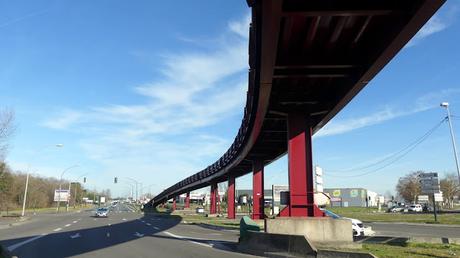
Towards the eastern tip of the soon-to-be-former wasteland is a sight that has never, ever featured on a list of things to see in Bordeaux, and yet its resilience certainly deserves to be rewarded with a few paragraphs on the Invisible Bordeaux blog. We give you l’Autopont de Latule or, if you prefer, the Latule flyover.
This too was a by-product of Bordeaux’s development to the north, and the early-1970s need to facilitate the movement of automobile traffic between central Bordeaux, its “boulevards”, and the Rocade, or indeed the nascent Bordeaux-Lac business, exhibition and hotel complexes. At this strategic point where a number of thoroughfares meet, this then-futuristic flyover was installed in 1972… which means it is now coming up to 50 years of age!
The single-lane metallic structure is 254 metres long, 3.5 metres wide, and is made up of 13 sections which vary in length between 12 and 30 metres. As it was initially designed to be used for a short period, by putting in so much overtime it also has to undergo regular maintenance work – which keeps the flyover in the news given that closures result in substantial tailbacks (and affect the travel plans of the passengers of the 13,000 cars who use the flyover each day).

But possibly the most remarkable thing is simply that the flyover is still in position and doing its job. There has been talk of the junction being turned into a massive roundabout, or else of automobile traffic being entirely diverted to free up the space, which would then be handed over to pedestrians and cyclists. But it’s still there, looking slightly out of place, like it should be in some vast American metropolis, a remnant of a bygone but not-so-distant era when urban infrastructure choices were fully focused on cars. Given the current climate and the essential shift to alternative means of urban transport, will we still be talking about the Latule flyover 50 years from now?
And now, enjoy a timelapse video showing how much the area has evolved between 1924 and the present day!
Click here if video does not display properly on your device.
> Find them on the Invisible Bordeaux map: site of former Pont de Cracovie, Cracovie wasteland, Latule flyover.
